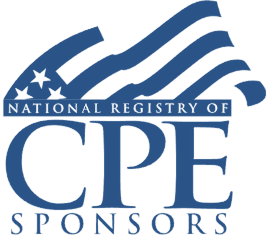- videocam On-Demand
- signal_cellular_alt Intermediate
- card_travel Estate Planning
- schedule 90 minutes
Domestic Asset Protection Trusts: Key Income and Transfer Tax Implications
Structuring DAPTs to Minimize Federal and State Taxes, Gifting, Creditor Issues, Other Legal Implications
Welcome! Save 30% on all CLE, CPE, and Professional Skills webinars, plus 15% off any annual pass with code CYBER2025
About the Course
Introduction
This CLE/CPE course will provide trusts and estates counsel an in-depth analysis of federal income and transfer tax consequences of domestic asset protection trusts (DAPTs). The panel will discuss key tax planning issues and structuring techniques to minimize federal and state taxes, navigating the differences between jurisdictions, and analyze other legal implications and limitations.
Description
Domestic asset protection trusts (DAPTs) are an integral part of many estate and asset protection plans. Under current tax law, trusts and estates counsel must identify critical structuring techniques and significant differences among jurisdictions to minimize income and transfer taxes.
States have enacted asset protection legislation allowing individuals to create a trust with themselves as a beneficiary while still removing the trust assets from the reach of their creditors and estate taxation. However, they raise significant federal income and transfer tax issues to consider when structuring transactions.
Trusts and estates counsel are considering establishing DAPTs to lock in transfer tax exemptions. The IRS acknowledges that a transfer to a DAPT can be a completed gift even if the asset is distributed back to the settlor at the trustee's discretion. If a grantor makes a transfer while retaining the right to the income from the asset, then it may be included in the estate under Section 2036. Furthermore, a DAPT might be used to escape the income taxes of many states if structured correctly, but if not, unintended state taxes can be significant.
Listen as our panel comprised of estate planning, tax, and asset protection experts discusses best practices for using DAPTs, essential structuring techniques to minimize income and transfer taxes, identifying the differences among jurisdictions, and other tax and legal implications.
Presented By

Mr. Gopman's practice focuses on sophisticated wealth accumulation and preservation planning strategies for entrepreneurs. He assists entrepreneurs with their personal and business planning needs at all phases of the wealth accumulation and preservation cycle. He has substantial experience in assisting high net worth families with international and domestic estate planning, implementing foreign trust structures, business planning and general tax planning.

Mr. Redler has held positions with Amicorp in its offices in Auckland New Zealand and Miami Florida, and Southpac Trust International, Inc. with offices in the Cook Islands and Tauranga New Zealand. His responsibilities included serving as Trustee for off-shore trusts settled by high net-worth clients along with structuring bank accounts throughout various countries in Europe and Asia. He is presently based in Newport Beach CA where he is in private practice specializing in Asset Protection Planning for entrepreneurs, athletes, entertainers, HNW and UHNW families from all over the world.
-
This 90-minute webinar is eligible in most states for 1.5 CLE credits.
-
CPE credit is not available on recordings.
-
BARBRI is a NASBA CPE sponsor and this 90-minute webinar is accredited for 1.5 CPE credits.
-
Live Online
On Demand
Date + Time
- event
Tuesday, September 26, 2023
- schedule
1:00 p.m. ET./10:00 a.m. PT
- Asset protection planning under current tax law
- How the domestic asset protection trust works
- Statute of limitations
- Fraudulent transfers
- Exception creditors
- Structuring DAPTs to minimize income and transfer taxes
- State law considerations
The panel will review these and other key issues:
- In asset protection planning, what factors should counsel consider in deciding how and where to structure the DAPT?
- How does the DAPT work and what are the rules regarding statute of limitations, fraudulent transfers, and creditor exceptions?
- What factors must be considered in structuring DAPTs to minimize income and transfer taxes?
- What state law issues must be considered?
Learning Objectives
After completing this course, you will be able to:
- Recognize key factors that should be considered in deciding how and where to structure a domestic asset protection trust
- Ascertain how a domestic asset protection trust works and the rules regarding statute of limitations, fraudulent transfers, and creditor exceptions
- Understand factors that must be considered in structuring a domestic asset protection trust to minimize income and transfer taxes
- Identify state law issues that must be considered
- Field of Study: Taxes
- Level of Knowledge: Intermediate
- Advance Preparation: None
- Teaching Method: Seminar/Lecture
- Delivery Method: Group-Internet (via computer)
- Attendance Monitoring Method: Attendance is monitored electronically via a participant's PIN and through a series of attendance verification prompts displayed throughout the program
- Prerequisite: Three years+ business or public firm experience preparing complex tax forms and schedules, supervising other preparers or accountants. Specific knowledge and understanding of estate, gift and trust taxation including various trusts types, the unified credit, and portability.

BARBRI, Inc. is registered with the National Association of State Boards of Accountancy (NASBA) as a sponsor of continuing professional education on the National Registry of CPE Sponsors. State boards of Accountancy have final authority on the acceptance of individual courses for CPE Credits. Complaints regarding registered sponsons may be submitted to NASBA through its website: www.nasbaregistry.org.

BARBRI CE webinars-powered by Barbri-are backed by our 100% unconditional money-back guarantee: If you are not satisfied with any of our products, simply let us know and get a full refund. Contact us at 1-800-926-7926 .
Unlimited access to premium CLE courses:
- Annual access
- Available live and on-demand
- Best for attorneys and legal professionals
Unlimited access to premium CPE courses.:
- Annual access
- Available live and on-demand
- Best for CPAs and tax professionals
Unlimited access to premium CLE, CPE, Professional Skills and Practice-Ready courses.:
- Annual access
- Available live and on-demand
- Best for legal, accounting, and tax professionals
Unlimited access to Professional Skills and Practice-Ready courses:
- Annual access
- Available on-demand
- Best for new attorneys
Related Courses

U.S.-Israeli Tax and Estate Planning for Dual Citizens
Available On-Demand

Estate Planning With S Corporations: Legal and Tax Considerations for Counsel
Tuesday, February 17, 2026
1:00 p.m. ET./10:00 a.m. PT

Estate Planning for Multinational Families: Impact of OBBBA, Key Issues for Counsel
Wednesday, December 17, 2025
1:00 p.m. ET./10:00 a.m. PT
Recommended Resources

Building Your Book: Strategies to Secure Long-Term Success
- Business & Professional Skills
- Career Advancement
- Talent Development


